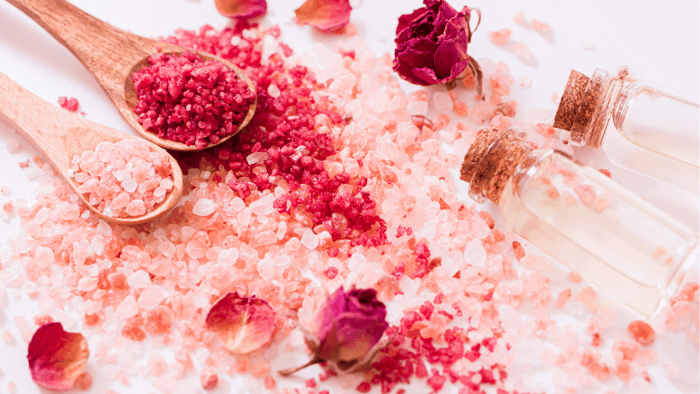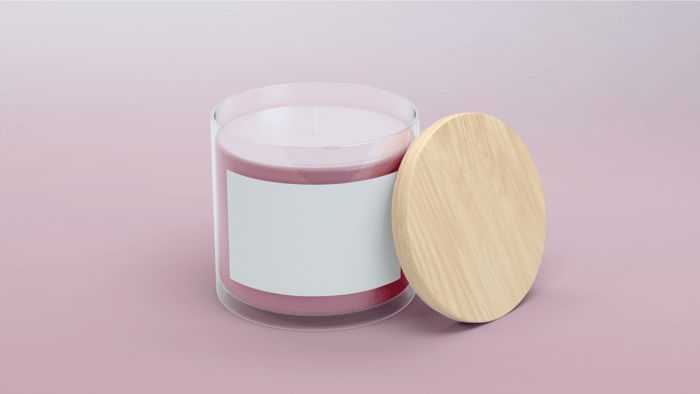Table of Contents
If you love filling your home with beautiful fragrance but want an easy, flame-free alternative to wax melts or candles, simmering granules might just become your new favourite thing. In this blog, we’ll walk you through how to make simmering granules from scratch - using simple ingredients, a little fragrance oil, and some creative flair.
Whether you're making them for personal use or to sell as part of your product range, simmering granules are a fun and cost-effective option with plenty of scent-boosting power. Let’s dive into the what, why, and most importantly, how to make simmering granules!
What Are Simmering Granules?
Simmering granules are scented crystals made from salt and fragrance oil that are designed to be heated in an oil or wax burner. Unlike wax melts, they don’t melt - instead, the salt heats up and releases the fragrance oil into the air, giving off a strong and long-lasting scent.
They’re mess-free, easy to clean up, and incredibly beginner-friendly. Plus, they look lovely when coloured or packaged creatively.
Why People Love Simmering Granules
Before we get into the process of how to make simmering granules, let’s take a quick look at why they’re such a hit:
🔥 Flame-Free Option - No open flames or melted wax to worry about.
💧 No Liquid Mess - When they’ve lost their scent, just tip them away - no cleaning up melted residue.
🌈 Customisable - You can add colour, botanicals, glitter, or even themed scents.
💰 Affordable to Make - Low-cost ingredients make this an ideal budget-friendly product or gift.
How to Make Simmering Granules (Step-by-Step)
🔧 What You'll Need:
Coarse Salt (dishwasher salt or rock salt - not table salt)
Fragrance Oil (make sure it’s IFRA-compliant)
Colouring (optional – liquid or powder dye safe for home fragrance use)
Mica Powder or Biodegradable Glitter (optional – for visual appeal)
Mixing Bowl & Spoon
Airtight Container or Mylar Bags for packaging
Some of our favourite Simminging Granule Scents:
Fresh Unstoppable Fragrance Oil

£1.99
Experience a clean and invigorating blend of citrus, florals and green notes. The fruity top notes of orange, peach and green apple will energise the senses, while the floral heart notes of jasmine, rose and neroli add a touch of… read more
Rosey Wonderland Fragrance Oil

£1.99
Indulge in a whimsical wonderland of fresh florals and let the green cut stem, rose and geranium transport you to a fragrant paradise, while the vanilla and powdery musk base adds a touch of sweetness. Our version of the popular… read more
Clean Cotton Fragrance Oil

£1.99
A soft, powdery blend of musk and florals, featuring delicate violet and orange blossom, complemented by refreshing green notes, jasmine, Our version of the designer candle. Similar in style and identity to the popular home fragrance brand.… read more
🧪 Step 1: Measure Your Salt
Start by pouring your coarse salt into a bowl - around 500g is a great starting batch.
Choose a chunky, crystalline salt so the fragrance oil clings well and the granules look visually appealing.
🌸 Step 2: Add Fragrance Oil
Add your fragrance oil, bit by bit, mixing well until it’s evenly coated. For 500g of salt, a typical range is 20–25g of fragrance oil.
💡 CLP Guidance:
In the UK, simmering granules usually fall under IFRA Category 12 (Air Fresheners - General). This means that up to 100% fragrance oil is technically allowed under IFRA for this use, which gives you flexibility. However, for CLP labelling, you must still calculate hazard information based on the final percentage of fragrance oil by weight in the product.
🧮 For CLP label purposes, you must:
Use your supplier’s CLP info for the fragrance at your usage rate (10%, 25% etc)
Include hazard statements, warning pictograms and allergens, etc, on your product label as required.
If you’re selling your simmering granules, make sure to include the correct CLP label for the exact fragrance oil and load used in order to remain legal and compliant.
🎨 Step 3: Add Colour (Optional)
You can customise the look with:
Liquid dyes (just a few drops)
Powdered pigments for colour
Mica powder for shimmer
Biodegradable glitter for sparkle
Be cautious with liquids - too much can dissolve the salt.
✨ Step 4: Let Them Dry
If the granules feel damp, spread them out on a tray and allow them to air dry for a few hours. They should feel dry and crumbly before storing.
🛍️ Step 5: Store or Package
Once dry, your simmering granules can be:
Stored in airtight containers to preserve scent
Packaged for sale in pouches, glass jars, tubs or mylar bags
🎁 Don’t forget your CLP label - include:
Product name & fragrance
Hazard statements (if applicable)
Allergen listing
Safety phrases such as "Use only in tea light burners or electric burners"
Contact details of your business
How to Use Simmering Granules
Add 1–2 teaspoons to the well of your burner.
Light a tealight underneath (or use an electric burner).
The heat releases the scent into the air without melting the salt.
Once the fragrance is gone, let cool and dispose of the granules.
No cleanup needed - just fresh scent, simply delivered.
Tips on How to Make Simmering Granules of High Quality:
✅ Use quality salt with a consistent grain size.
✅ Stick to trusted fragrance oil suppliers who provide full IFRA and CLP documentation so that you can easily be compliant.
✅ Don’t overdo it with the oil - too much fragrance oil can make the salt soggy or cause smoke.
✅ Test the scent strength in a burner before commencing batch production.
Can You Sell Simmering Granules?
Yes - simmering granules are a great addition to a home fragrance range. They’re popular at markets, craft fairs, and online shops. But remember:
CLP labelling is legally required in the UK if you’re selling them.
Every fragrance oil must be used within IFRA limits, even if the limit is 100%.
Use accurate CLP templates based on the actual fragrance percentage.
If you’re unsure, ask your supplier for the appropriate CLP label template.
Final Thoughts
Now that you know how to make simmering granules, you can start creating beautifully scented products that are easy to use and a dream to clean up. Whether you’re scenting your own space or adding them to your small business lineup, they’re an easy win.
Just remember - always stay within IFRA limits, use CLP-compliant labelling, and enjoy experimenting with scent blends, colours, and packaging.
VIEW FRAGRANCE OILS FOR SIMMERING GRANULES
Disclaimer: The information provided in this blog is based on our knowledge, experience, and research at the time of writing. While we strive to ensure accuracy, we encourage readers to conduct their own research and verify information independently, especially when making business or purchasing decisions. It is the reader’s responsibility to carry out thorough product testing, particularly before commencing batch production. Customers are fully responsible for checking the latest IFRA documentation, using the correct CLP labels for their specific products, and ensuring they hold the relevant CPSR assessments where required. House of Scent is not liable for any actions taken based on the content of this blog.
FAQs
What Are Simmering Granules?
Simmering granules are scented crystals made from salt and fragrance oil that are designed to be heated in an oil or wax burner. Unlike wax melts, they don’t melt - instead, the salt heats up and releases the fragrance oil into the air, giving off a strong and long-lasting scent.
They’re mess-free, easy to clean up, and incredibly beginner-friendly. Plus, they look lovely when coloured or packaged creatively.






.jpg)






